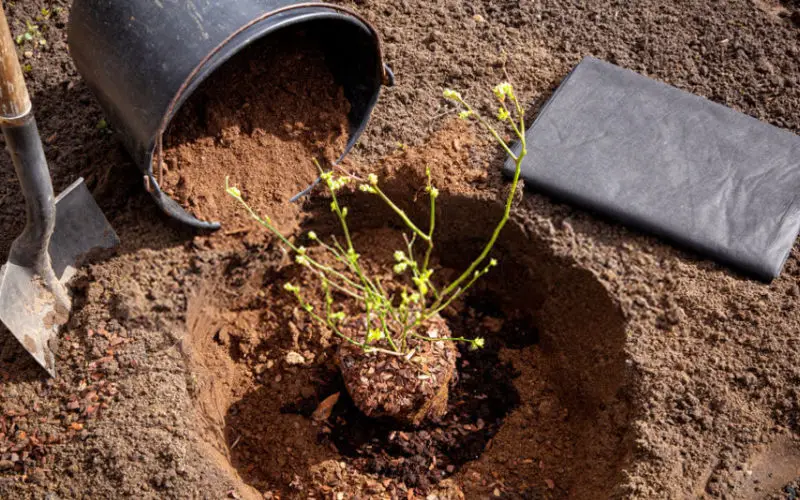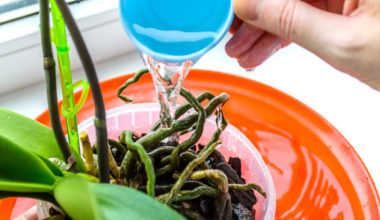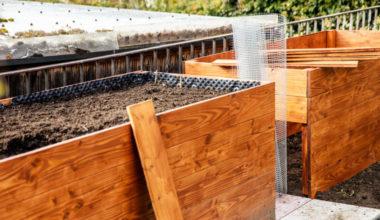The mineral content of soils varies according to local geology, and these variations affect the relative acidity or alkalinity of the soil. The level of acidity is measured by the pH level. The pH level ranges from 0 to 14, with a pH of seven representing a neutral level. Lower numbers indicate acidic soil, higher numbers indicate calcareous (or alkaline) soil.
Proper pH levels are critical to a plant’s ability to absorb the nutrients it needs from the soil. Iron absorption is particularly affected by soil pH levels.
Contents
How to tell if your soil is low in acidity
Plants that require a more acidic soil than the one they are growing in often signal this by developing chlorosis. This is a deficiency that causes your Camellia’s leaves or some veins to turn yellow.
If this happens, your plants may need you to add an amendment to the soil they are growing in, or supplement their need for acidity with a fertilizer designed for this purpose. There are a variety of soil amendments and fertilizers available to help acid loving plants. Most are available at garden centers and home improvement stores.
Before applying a soil amendment, have your soil tested to determine the types and amounts of amendments required.
How to change soil pH
To make an alkaline or neutral soil acid, or to increase the acidity of one that is already acidic, chemicals can be added, usually aluminum sulfate, sulfur or tannic acid.
For ordinary gardening, it is preferable and safe to use organic materials such as those presented in the paragraph below.
9 organic materials to acidify your soil
1. Sulfur
Sulfur takes a while to lower the pH of the soil. Therefore, it should be added the year before planting. In many ways, it is certainly the best option. It stays in the soil for years and does a better job of acidifying than most other amendments.
Sulfur is best applied in the summer or fall, before the next spring’s planting season, by driving it deep into the soil. It is not very effective to try to bury the sulfur around existing plants. As with any amendment, you should have a soil test done to determine how much sulfur to apply to achieve the desired pH.
2. Iron Sulfate
Iron sulfate lowers the pH but requires a much larger volume of product to produce the same results as sulfur. It is often used to treat specific symptoms of iron deficiency.
Iron sulfate works faster than sulfur (in three to four weeks) but can damage plants if used excessively. It can be buried in the soil as a powder or applied as a solution and watered onto the leaves to absorb it.
3. Peat
Used in large quantities in potting soils and growing media, peat slightly acidifies the soil while adding organic matter. When preparing your soil for planting, place 3 to 6 inches of acidic peat on top of your topsoil and work it in to a depth of 6 inches.
This will acidify the soil for about two years. Please note that peat is a non-renewable extracted material, found mostly in wetlands (rich in biodiversity). The environmental impact of peat is therefore significant.
4. The heather dirt
The real “Terre de Bruyère” is a soil generally from the forest of Sologne or the Loire Valley. It has the quality of being naturally acidic (pH of about 5.2).
The downside of heather soil is that its pH level can vary from one bag to another because nature is not perfect. We regularly recommend mixing heather soil with other soil to add acidity to the soil. Heather soil is also light and flexible.
5. Heather soil
So-called heather soil is what you might call a reproduction of heather soil. Generally composed of peat, it is “artificially” acidified to be as close as possible to the real Earth of Heather.
The price of a so-called heather soil is lower than the real one, and its pH level is more stable (also 5.2). Simply mix it with your garden soil to acidify your soil.
6. Fertilizer for heathland plants
If your acid-loving plants are isolated among other non-acidic plants, it may not be practical to amend the soil, as the increased acidity could then affect the other plants.
In this case, the best option is to fertilize with one of the many water-soluble products available in stores. Start with mild solutions until you notice the impact on your plants.
7. Use aluminum sulfate (with caution)
Powdered aluminum sulfate has been a standard soil additive for gardeners growing blueberries and many other plants because it works quickly and is convenient to apply around plants. Recently, however, there has been concern about the possible dangers of aluminum toxicity, which can be especially harmful to children.
Aluminum can be absorbed into drinking water, and excessive use of aluminum sulfate as a soil amendment can contribute to contamination of groundwater supplies. Many experts now recommend using aluminum sulfate only on hydrangeas, where the aluminum helps create the bright blue flowers. For other plants, safer options are available, such as ammonium sulfate.
8. Ammonium Sulfate
This is a good alternative to aluminum sulfate. It can be planted in the soil around the base of plants to increase sulfur levels in the soil. Care must be taken, however, as it can burn plants by raising acidity levels too quickly.
9. Urine
Urine feeds the plant and the soil at the same time. Phosphorus and sulfur are added to the nitrogen in large quantities, allowing the plants to be efficiently nourished. Use urine as a spring fertilizer to start the growing season, but stop watering a month before eating vegetables.
Plants that need acidic soil
The ideal soil pH for most landscape plants and grasses is around 6.5, which is slightly acidic. But some plants need more acidic soil to thrive. Here are some of the plants that need acidic soil:
Shrubs:
- Azalea
- Holly
- Rhododendron
- Camellia
- Most evergreen shrubs
Trees :
- Beech
- Dogwood
- Magnolia
- Narrowleaf Oak
- Most evergreen trees
Flowers :
- Begonia
- Hydrangea
- Japanese Iris
- Trillium
- Zinnia
Vegetables :
- Parsley
- Peppers
- Potatoes
- Radishes
- Rhubarb
- Sweet potatoes
- Blueberry
- Currants
- Gooseberry









